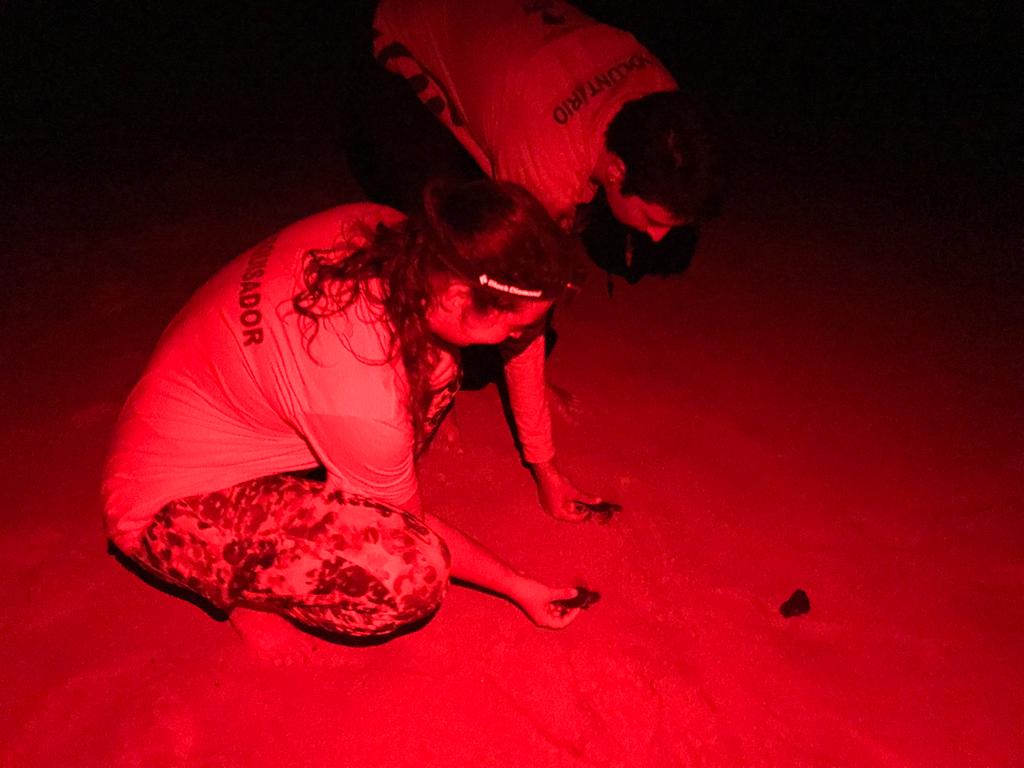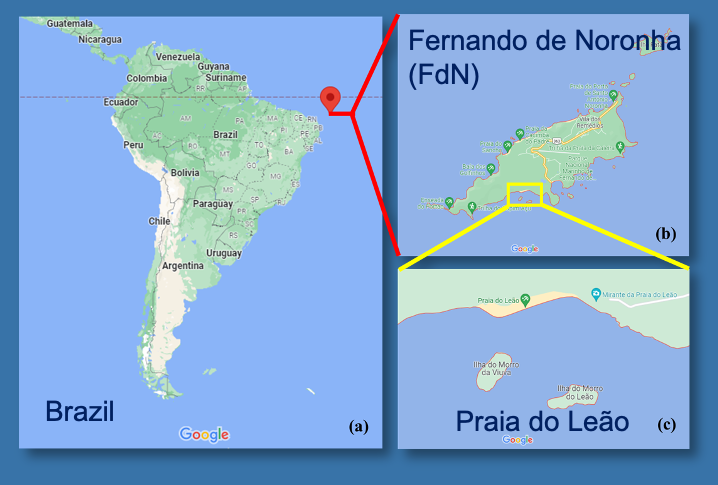Heat, Hatchlings, and Sea Turtle Survival
A team of researchers makes its way across the beach on this dark night, lighting their way only with starlight and moonlight. It’s high tide on this small island off the coast of Brazil, and the kind of night when green sea turtles love to come ashore to nest. The turtles fall into a trance-like state after wandering around for hours and finally building their nests, and this is when the team approaches. They take a skin sample, place a temperature logger to measure the nest temperature, and tag the turtle with a nail polish marking for future identification. One member of the team is Vic Quennessen (she/they), the subject of our next episode. Vic is a PhD student in the Department of Fisheries, Wildlife, and Conservation Sciences. Quennessen is a computational researcher on the project but helping out on nights like these is part of the job. Vic’s team collaborates with Projeto TAMAR, a Brazilian nonprofit organization that works to preserve and conserve these endangered animals throughout Brazil since the 1980s.

Sea turtles have no sex chromosomes, and their sex is instead determined by the environmental temperature during incubation. Eggs subjected to higher temperatures are more likely to produce female hatchlings. The point at which the sex ratio of eggs approaches 50/50 is around 29 degrees Celsius, but at just one degree higher, some clutches of eggs produce as high as 90% female hatchlings. As temperatures rise due to climate change, this has resulted in a worrying oversupply of female hatchlings.
Sea turtles are difficult to study due to their long and mysterious life cycles. It is believed that they reach reproductive maturity after around twenty-five years, but only females are readily observed because they return to land to build their nests and lay eggs. In contrast, the males stay out at sea for their entire lives. This complicates any effort to ascertain the true population structure. Sea turtles also live a long time, so there is a lag between changes in the hatchling population and the overall population. Finally, hatchlings lack external reproductive organs or other visible sexual characteristics, so the sex ratios must be estimated using temperature as a surrogate.
Vic has always loved the ocean, and they came to OSU looking to help conserve resources that are threatened, such as fish stocks or sea turtles. While attending UMass Dartmouth for their undergraduate degree, they double majored in computational mathematics and marine biology. Initially these felt like separate interests, until a professor suggested that she apply to a NOAA workshop on marine resources and population dynamics. Here she learned that mathematical methods could be a part of rigorous modeling efforts in population biology. After a gap year dedicated to science education, Vic made her way to Oregon State for a Masters in Fisheries Science. Her advisor, Prof. Will White, persuaded her to stay on for a PhD with an opportunity to study her beloved sea turtles.

Quennessen’s research seeks to predict how the green sea turtle population will be affected by their looming sex imbalance. Vic uses data collected from over 3000 hatchlings per season, including nest temperature readings as well as the numbers of nesting females, hatchlings, and captured males. They build a mathematical model to explore possible scenarios for the “mating function”, the unknown relationship between the sex ratio and reproductive success. On the one hand it is easy to imagine that such a mismatch could reduce the number of mating pairs and lead to a rapid population decline. On the other, it is not well understood how many breeding males are required to sustain the population, and adaptations in mating behavior could slow the decline in population long enough for the more optimistic climate mitigation scenarios to take effect. In any case, it will take a lot of international cooperation to conserve these ancient marine creatures – green sea turtles nest on the shores of over 80 countries. Vic’s hope is that a mathematical exploration of this question could help reveal the chances of survival for the green sea turtles and possibly inform these conservation efforts.
To learn more about Vic’s research and their other interests, including science education and working with CGE, the graduate student union at OSU, tune in Sunday, Nov 6th at 7pm PST on KBVR 88.7 FM or online!
Missed the show? Don’t worry, you can download this episode via your podcast player of choice here.
